In today’s fast-paced digital world, content is king—but who’s writing it? Increasingly, the answer is artificial intelligence. From blog posts to emails to social media captions, AI generated text is becoming a normal part of the content creation process. But what exactly is it? And more importantly—how can we make it sound more human?
Let’s explore everything you need to know about AI generated text, including how it works, where it excels, and why humanizing it is crucial for real-world success.
What Is AI Generated Text?
A Quick Definition
AI generated text is content created by machine learning algorithms, specifically trained on large datasets of human-written material. These programs—like ChatGPT, Jasper, and Copy.ai—can write articles, emails, summaries, and more based on prompts you give them.
How Does It Work?
AI uses natural language processing (NLP) to understand and replicate human language patterns. It predicts the next word or phrase in a sentence based on the data it’s been trained on. While this produces grammatically correct and informative content, it’s often missing the flair, creativity, or soul of a human writer.

The Rise of AI in Content Creation
Popular AI Writing Tools
ChatGPT (OpenAI)
Jasper AI
Copy.ai
Writesonic
Quillbot
These tools have exploded in popularity, thanks to their ease of use and time-saving abilities.
Why People Use AI for Writing
People turn to AI generated text for speed, volume, and efficiency. Whether you’re running a blog, managing an e-commerce store, or writing academic reports, AI tools can handle the heavy lifting.
Benefits of AI Generated Text
Speed and Efficiency
AI can produce a full-length article in seconds. This is a game-changer for marketers and bloggers who need to churn out content regularly.
Cost-Effectiveness
Hiring writers for large content needs can be expensive. AI tools offer a cheaper alternative for generating bulk content.
Scalable Content Creation
Whether you need 5 product descriptions or 500, AI can deliver without needing a coffee break.

The Limitations of AI Generated Text
Lacks Human Emotion and Nuance
AI doesn’t “feel.” It can’t express personal stories or experiences in the way a real writer can. That’s a big drawback when you’re trying to connect with readers emotionally.
Often Generic or Repetitive
AI can fall into repetitive sentence structures and cliché phrases. This makes the content feel flat or uninspired.
Can Be Detected by AI Checkers
Many platforms now use detection tools like GPTZero, Turnitin, or Originality.ai to flag AI content, especially in education and journalism.
Why Humanizing AI Generated Text Matters
Building Trust with Your Audience
Readers can tell when content is robotic. They’re more likely to trust, engage with, and share writing that feels human.
Improving Engagement and SEO
Google favors original, valuable content. Humanized text keeps people reading longer, reduces bounce rates, and ranks better.
How to Humanize AI Generated Text
Add Personal Touches and Experiences
Drop in a story, an opinion, or a little humor. These are things only humans can provide.
Use Natural, Conversational Language
Speak directly to the reader. Use contractions, simple sentences, and relatable phrases.
Vary Sentence Structure and Tone
Don’t let your writing sound like it’s coming from a machine. Mix short and long sentences, and play with tone and rhythm.
Proofread and Edit Thoroughly
Read your content aloud. This helps spot awkward phrases and ensures your text flows naturally.

Tools That Help Improve AI Content
Grammarly and Hemingway Editor
These apps enhance readability and tone, ensuring your text feels polished and human-friendly.
Content Humanizers
Platforms like Quillbot or Humanizer Pro can paraphrase AI-generated content to make it more natural.
When to Use AI Generated Text
Drafting and Outlining
AI is excellent for brainstorming ideas or creating the first draft you can refine later.
Brainstorming and Inspiration
Stuck for ideas? Let AI suggest topics, headlines, or bullet points to kickstart your creativity.
Time-Saving for Repetitive Tasks
Use AI for FAQs, summaries, or meta descriptions where the structure is fairly standard.
AI Text in Different Industries
Blogging and Digital Marketing
Marketers use AI to generate SEO-friendly blog posts, email campaigns, and social content quickly.
Education and Academic Writing
While controversial, some students use AI generated text to draft essays. However, it must be thoroughly edited and cited properly.
E-commerce and Product Descriptions
Online stores use AI to write bulk product listings, then personalize them for brand tone and customer appeal.
The Future of AI Generated Content
As AI continues to evolve, so will its ability to create more human-like content. But one thing remains clear—human touch will always be the key to genuine connection. The best strategy is combining AI’s efficiency with your unique voice and creativity.
AI generated text has revolutionized how we create content. It’s fast, scalable, and accessible. But it’s not perfect. The best results come when you take that AI-written draft and make it your own—adding emotion, clarity, personality, and purpose.
Use AI as a helper, not a replacement. Because even in a tech-driven world, people still crave connection—and only you can provide that.
FAQs About The AI generated text
What is AI generated text?
AI generated text is content written by machine learning algorithms, trained to mimic human language and writing patterns.
Is AI-generated content detectable?
Yes. Tools like GPTZero and Turnitin can often detect AI-generated writing, especially if it’s not edited or humanized.
Can I use AI generated text for SEO?
Yes, but it’s best to humanize the content to improve readability, engagement, and search engine rankings.
How do I make AI text sound human?
Add personal touches, use conversational language, and edit for tone and emotion.
Are there tools to help improve AI-generated text?
Yes. Grammarly, Hemingway, and content humanizers like Quillbot can help make your content more readable and natural.







